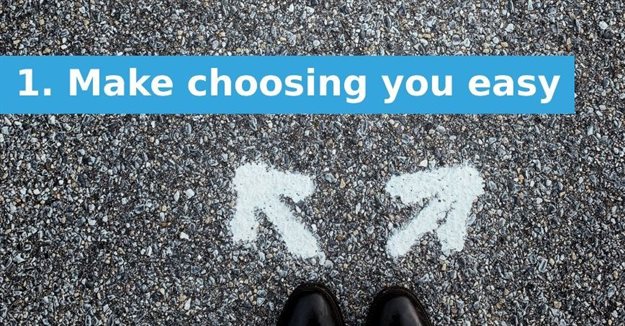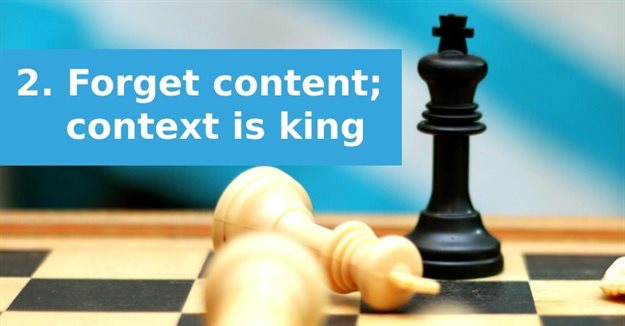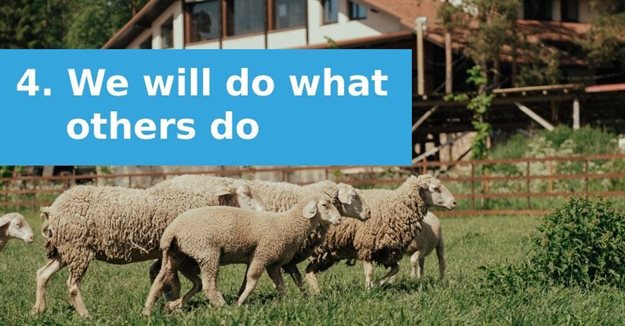#BizTrends2021: Move to minimal in 2021
Analysing the year through a behavioural science lens shows that 2020 was a year of cognitive overload. We were presented with too much information and too many new tasks simultaneously, often resulting in our inability to process information, or at the very least, leaving us feeling overwhelmed, anxious and confused by the choices around us.
If plenty was the theme for 2020, it’s time to move to minimal in 2021 – not in terms of our marketing efforts, but in terms of the ‘work’ we expect our consumers to do in order to pick us.
Back to basics with behaviour
The study of human behaviour highlights that our decision-making is based on multiple, often irrational, principles. The key insight is that consumers all want things to be easy, quick and rewarding – and the less work they have to do to get to a decision; the better.
Here are seven ways to achieve this as marketers:

Trader Joe’s, considered America’s “nudgiest” grocery store, embraced minimalism early on in their brand development. They limited the options on their shelves to about 10% of the items traditional grocery stores offer, based on the knowledge that people are more likely to purchase an item when faced with fewer options. Reliability and consistency are crucial factors in purchase decisions, and a curated selection promotes this. Don't worry: you don't need to reduce what your brand offers. Instead, promote a few headline offers in your brand marketing.
Key takeout: consumers want to feel they have control of choosing, but don’t want to spend too much time making decisions. Limit the choices you market to them to avoid choice fatigue.

Ever wondered why we wait for the start of a new year to set resolutions or are more open to changing our habits during periods of transition, like starting a new job? The answer is that we respond differently to prompts depending on when they occur. The contextual timing of your marketing is therefore critical. Catching someone just after a tea or lunch break, for example, can increase the likelihood of persuasive success. It’s why Mondays (with overflowing inboxes from the weekend) are known for being bad mailer engagement days.
Key takeout: spend just as much time planning when to schedule your marketing content (time of day, day of the week, seasonal trends, etc.) as you do creating it.

Your audience will engage with your marketing if they feel it’s speaking to them. The behavioural science term ‘salience’ describes how people are more likely to do something that catches their attention – and personalisation is a great way to get this right. Our own names, for example, appeal to us more than other words and draw us in quickly. But, personalisation goes beyond just names and can be applied through handwritten notes (for example, Yuppiechef), tailored recommendations of what to watch next (Netflix) and nudges for personalised gifts that fit our purchasing profile (NetFlorist).
Key takeout: start to build your customer database with deeper insights and use this information to tailor your messaging. When no one else was doing it, a simple name greeting was enough but now we need to think of new ways to add customisable fields to our content.

Herd behaviour or social proofing is when we make a decision based on what others have already decided. Think about the last time you were choosing between two restaurants, side-by-side. You ended up choosing the busier restaurant didn’t you? Even if it meant a longer wait. When we are given evidence that others have chosen something (and done the heavy lifting for us), it triggers herd mentality in our brains. Framing marketing messages by showing why existing customers picked you helps encourage new customers to pick you, too.
Key takeout: those age-old marketing tools like testimonials, recommendations, referrals and client reviews work well. A 'voice of the expert' effect, through brand ambassadors and (thoughtful) influencer marketing, gives a brand credibility and makes you more trustworthy.

Behavioural research suggests people are more motivated to act if they've been given a head start towards a goal. A study of loyalty programmes showed that customers who were given loyalty cards where two slots were already stamped (versus similar cards with fewer slots, but all empty) ended up getting nearly double the rate of loyalty card completion. This is because the friction of getting started was removed: customers were already well on their way to earning a reward.
Key takeout: make people feel they have already begun a process rather than just starting from scratch to motivate them to engage – upfront loyalty points or discounts when signing up, pre-populated information boxes when setting up personal profiles and filled-in progress bars are some ways to achieve this.

Our favourite Mark Twain quote best explains this principle of simplicity: “I didn’t have time to write a short letter, so I wrote a long one instead”. Simplifying your message and making the content easy to understand can result in big improvements to response rates. Other recommendations include making sure the key message is presented early (ideally in the first sentence or subject line), keeping language plain and simple, being specific about calls to action and removing all non-essential information.
Key takeout: Short, succinct, clear writing is harder to achieve but ultimately better for the consumer. Make sure you have expert content creators who specialise in behavioural communication and plain language.

Without question, we’re spending more of our time online and it’s critical for a brand to have a strong digital presence. That said, there is increasing opportunity to re-invent the experiential with many consumers searching for new ways to connect with people – nostalgic for the simpler, lower-tech days. The novelty effect of going against the grain helps a brand grab attention and engage their consumers in different ways. Daily Maverick’s launch of a print newsletter – while all around us print media houses were shutting their doors – is a great example of this.
Key takeout: Safe, socially distanced activations, posted letters and the return of old-school events like the drive-in are some ideas to help people escape from their screens and reduce our ever-growing Zoom-fatigue.
Hello there, 2021
2021 is set to bring with it a new set of challenges and consumer trend shifts. Our advice? Give your customer minimal work to do and you’ll get maximal brand outcomes.































